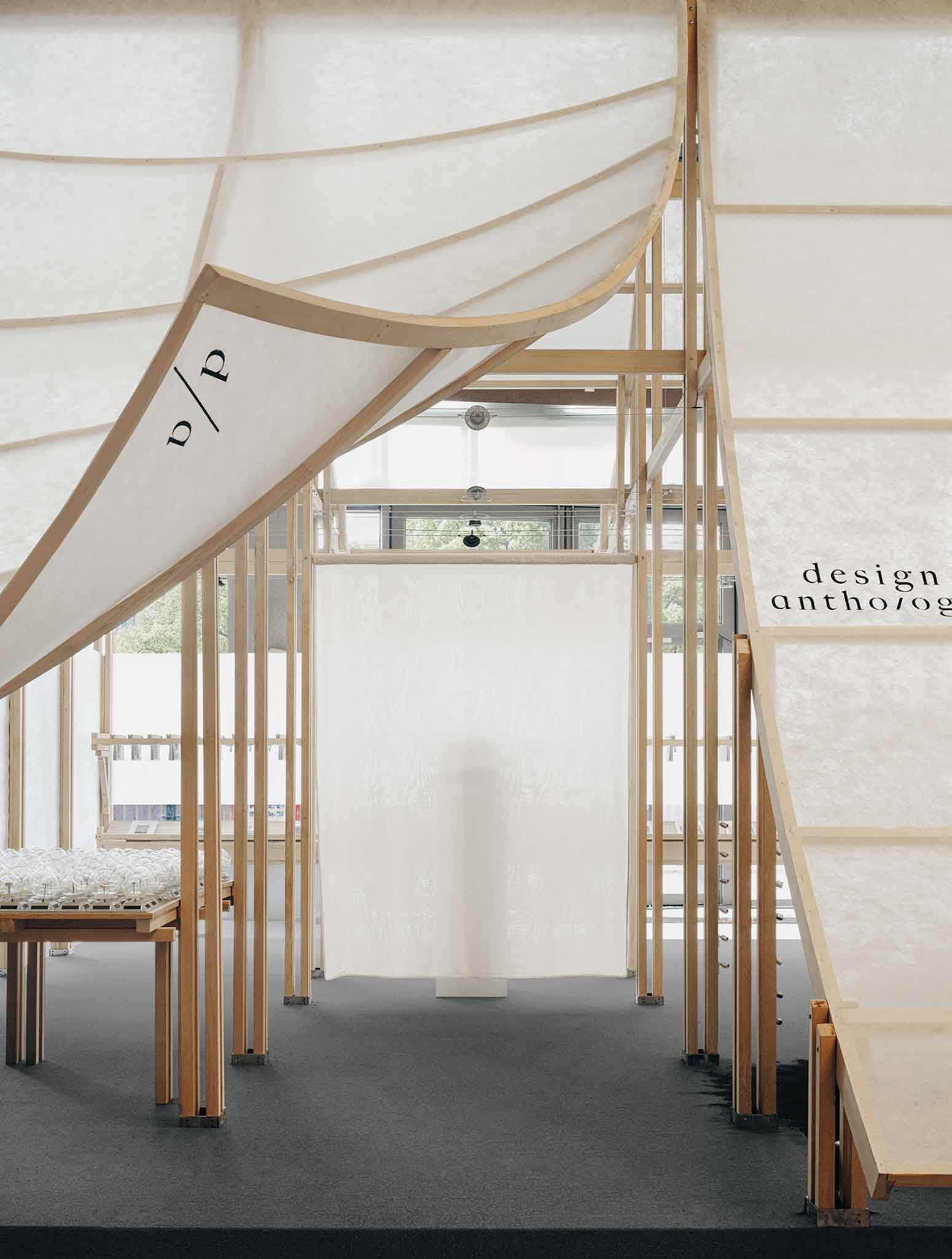
Paper has become an important component of books and publications because of its softness. It records and carries information, and serves as the primary medium for the audience to interact with the content.
Part 1: Look through
At the entrance, a lifted-up shaped corner is like a page about to be turned. As visitors approach, they are able to immerse themselves in the “reading atmosphere” created by the space. Glimpsing through the cracks evokes a sense of exploration and curiosity, while also corresponding to the understated elegance that is a unique feature in traditional Chinese architecture and culture.
The scattered artworks throughout the area ensured that visitors experienced different surprises at each branching point of their journey through the exhibition. By using the sustainable natural material of wood as its core material, the main structure is able to achieve a holistic construction. At the same time, expressing traditional architectural techniques through contemporary design demonstrates the practicality of combining form and structure, providing a feasible approach for future flexible dismantling, rapid transportation, and multiple cycles of use.
In addition, the exterior skin material of washi paper is wrapped from the outside to the inside, echoing the theme. Soft partitions are also made of the same material to achieve separation between active and quiet areas. The material is flexible, delicate, lightweight, and transparent, creating a sense of openness and fluidity within the space.
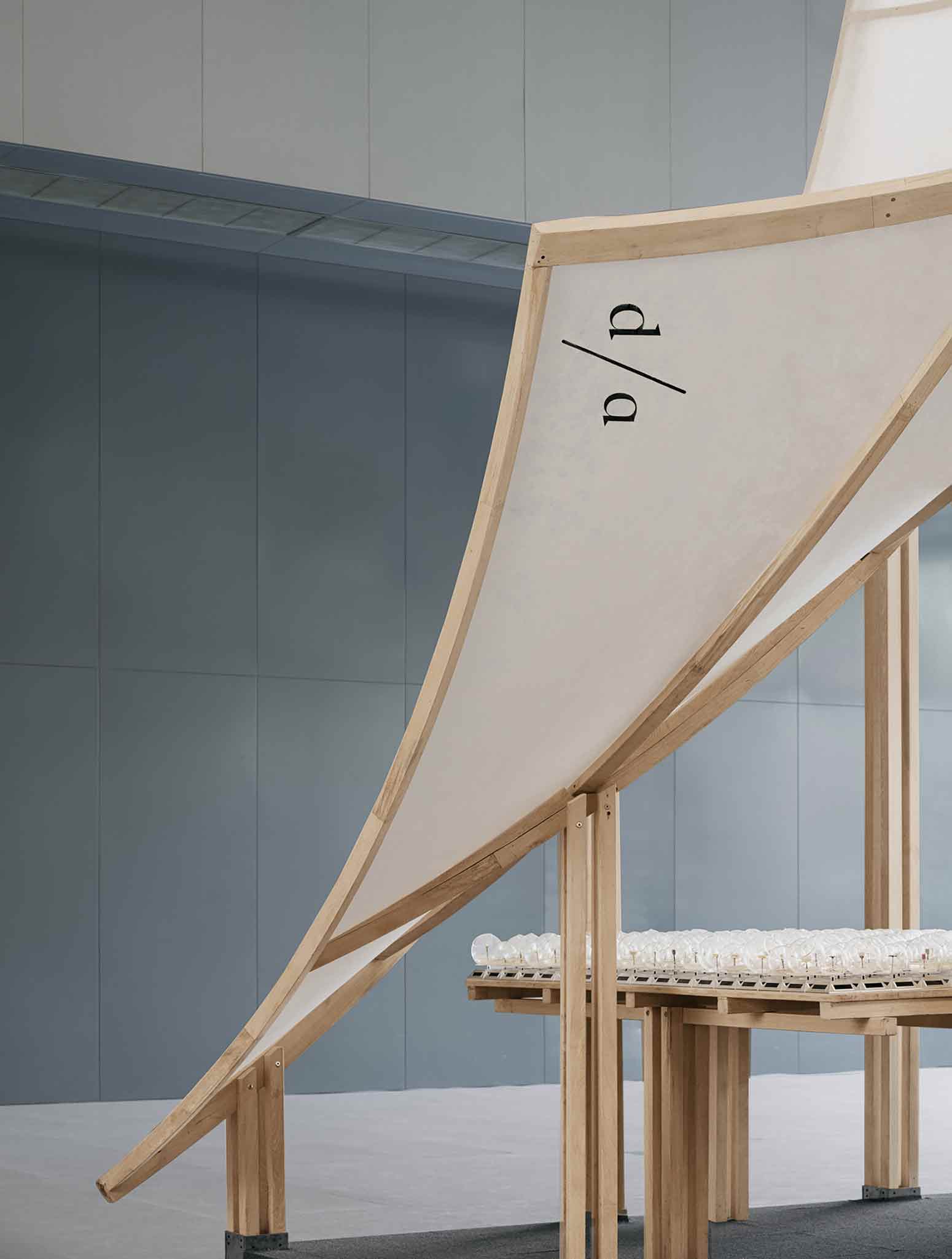
PHOTOS BY Xinghao Liu
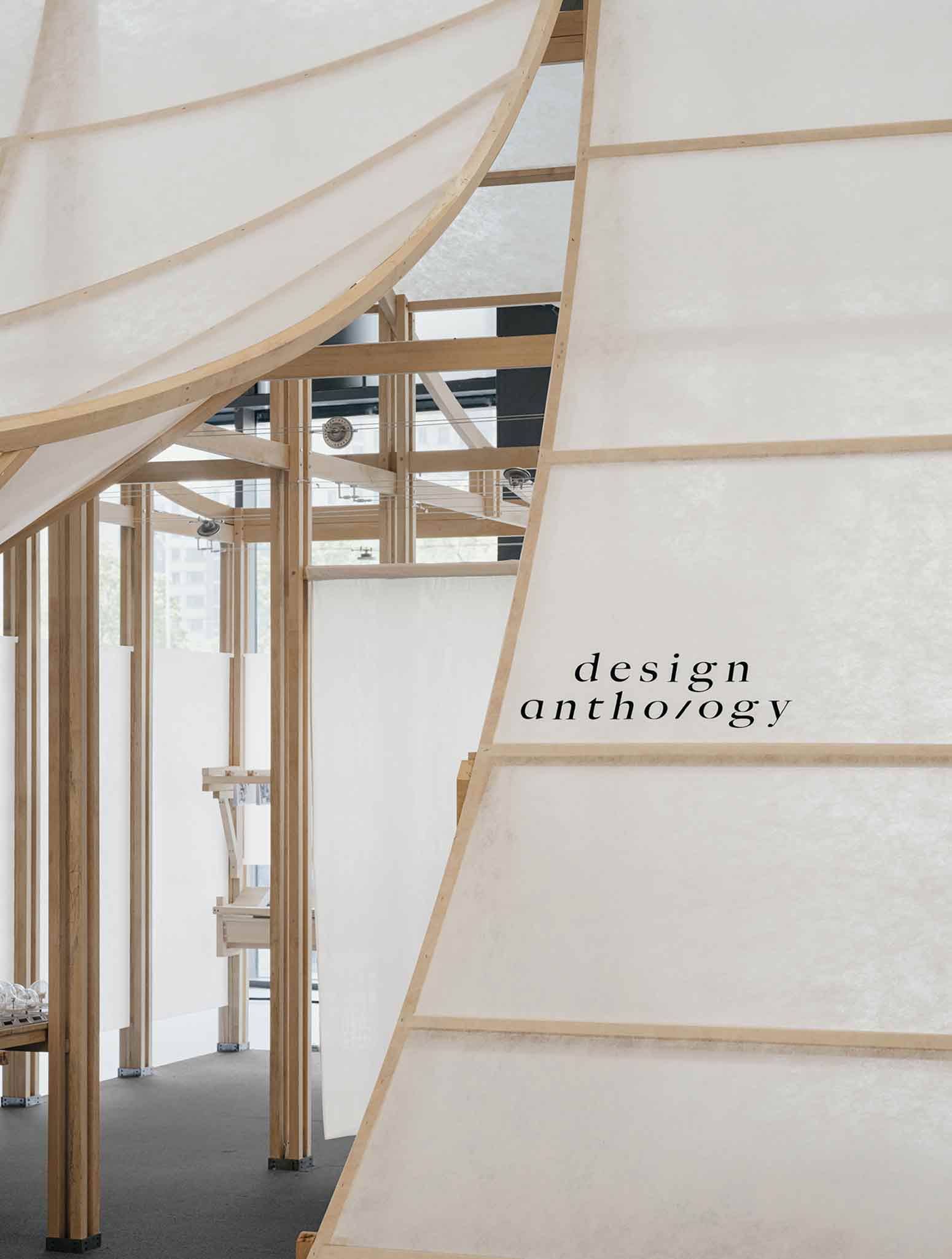
PHOTOS BY Xinghao Liu

PHOTOS BY Xinghao Liu

PHOTOS BY Xinghao Liu

PHOTOS BY Xinghao Liu
Part 2:Archive
On another level, books and publications are like “archives,” filtering through massive information, carrying creative ideas, and inspiring inspirations. To complement with the sense of lightness and transparency presented by the building, we have replaced conventional hanging light fixtures with light lines hidden in woodworking grooves, presented alongside traditional woodworking structures. This not only meets the lighting needs but also serves as a decorative detail in the space. The collision of the past with the present allows us to express aesthetics within the framework of contemporary design language.
In the spatial circulation planning, we have divided the space into different sections with various content and presentation styles. Among them are displays of artworks and exhibitions from different artists, offering an immersive experience for visitors to browse and explore. When they further step into the space, they will come across a relatively independent area where previous issues of the Design Anthology magazine are displayed on traditional magazine racks, clearly organized and easily accessible.
In addition to the conventional reading experience, we have incorporated small material board installations into the magazine rack, creating a more multi-dimensional experience through the presentation of different textures and facets of the display. Through various ecological combinations of art and design, a utopian is created where people can gather and communicate. Washi paper, used consistently throughout the space to connect different modules and contents, has become the keywords in space cutting.
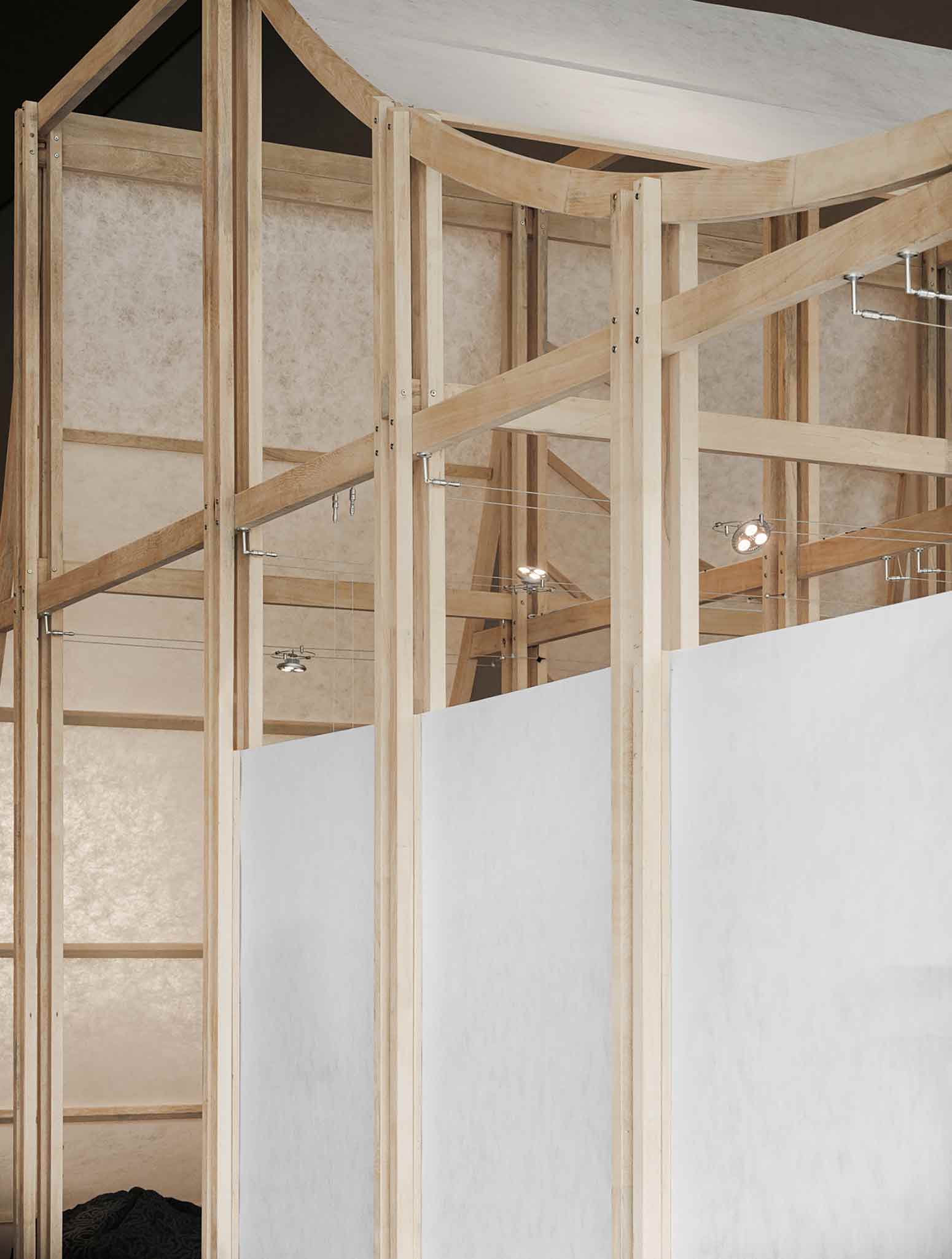
PHOTOS BY Xinghao Liu
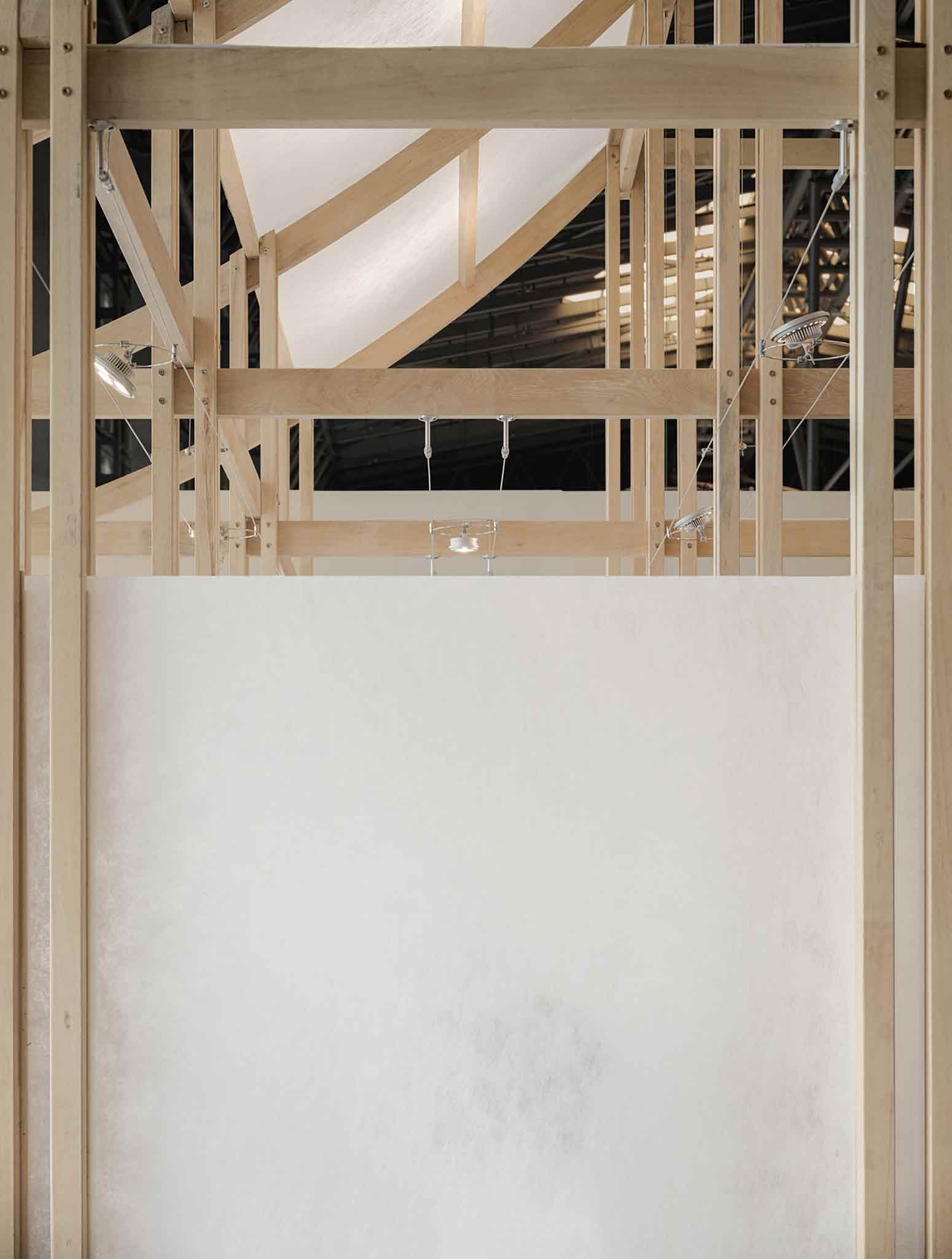
PHOTOS BY Xinghao Liu

PHOTOS BY Xinghao Liu
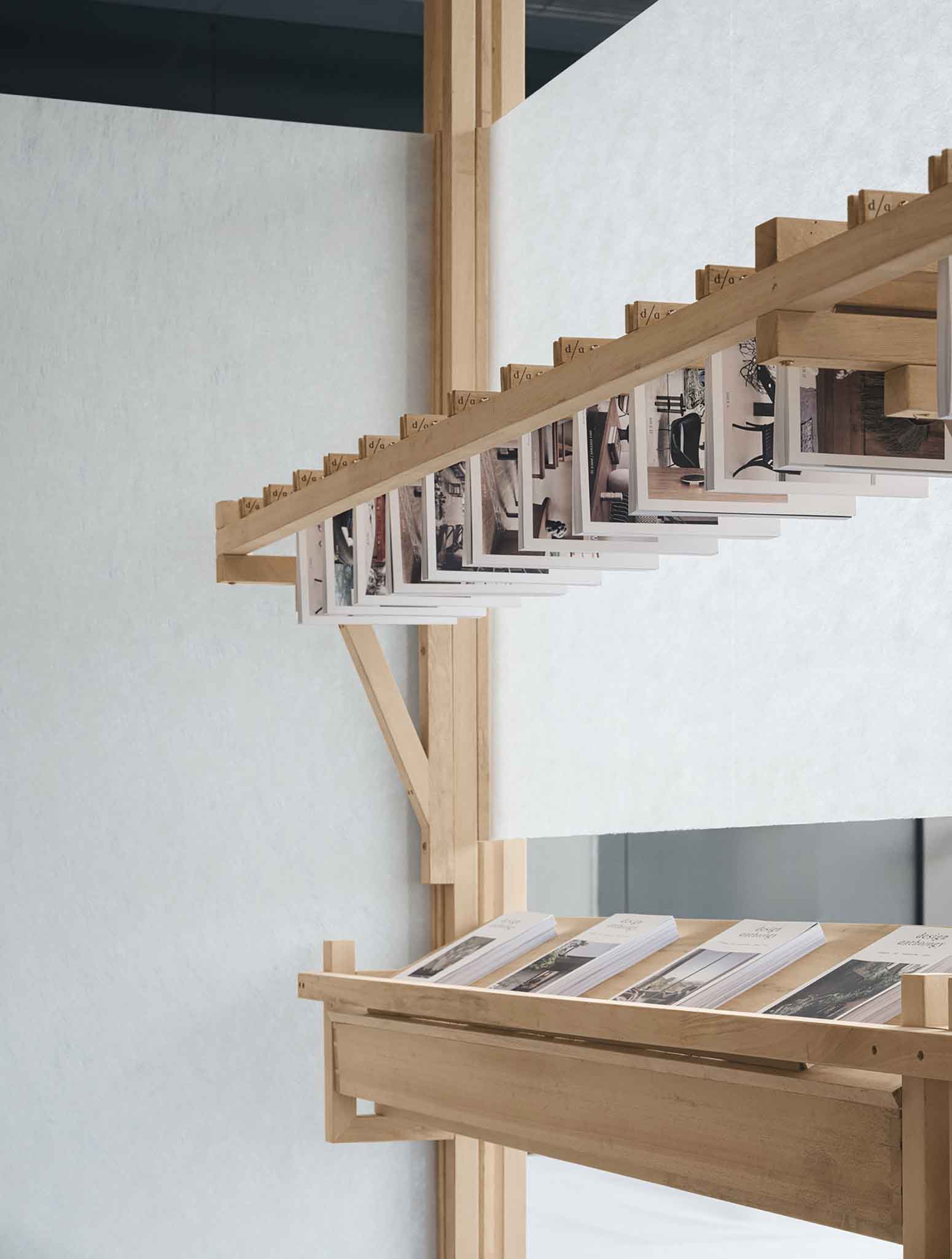
PHOTOS BY Xinghao Liu

PHOTOS BY Xinghao Liu
Part 3: Lift up
翹, the same as翘, was first recorded in Shuowen Jiezi (a Chinese dictionary from the Han Dynasty) in the seal script form.The original meaning of the character refers to the long feather on the tail of a bird that can be raised upward, and it also refers to the posture of a head that is lifted upward. We draw inspiration from the character “翹” because it combines both form and phonetics.
One of the inspirations comes from the character “垚,” which is derived from traditional architectural structures and resembles three layers of soil, similar to the structure of a dougong, which represents the beam and column structure in Chinese architecture. Another inspiration comes from the character “兀,” which is derived from the shape of ancient building eaves and represents the shape of a roof. The character “羽,” derived from the sound of “yao” in ancient texts, represents the long feathers of a bird and its light and graceful posture, which is echoed in the material used for the project. Finally, the character’s shape is derived from its meaning of being raised high, its essence has transcended the original definition that recorded in ancient books, reaching for something beyond and creating a sense of resonance and aspiration. Through vivid and dynamic expressions that follow the ancient meanings, we aim to renew and revitalize the characters.
Collaborator: Art Support – X+Q Art
Project information
- Architect:Atmosphere Architects
- Location:China,
- Project Year:2023
- Photographer:Xinghao Liu
- Categories:Cardboard,Cultural,Exhibition